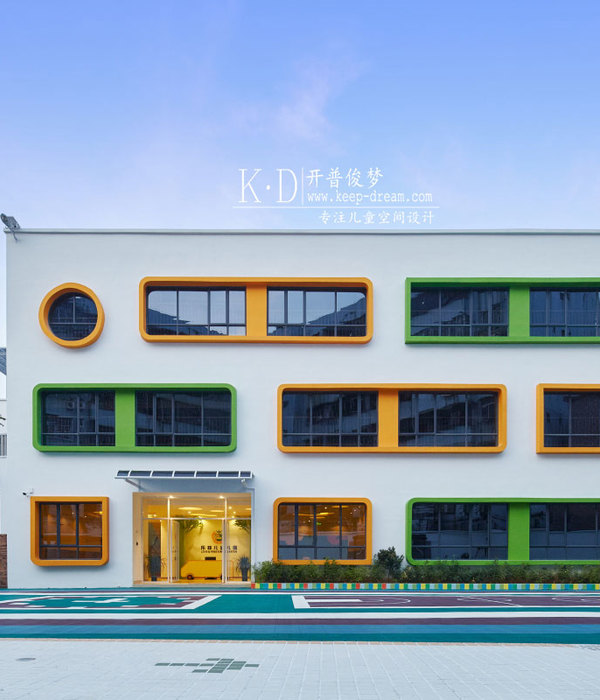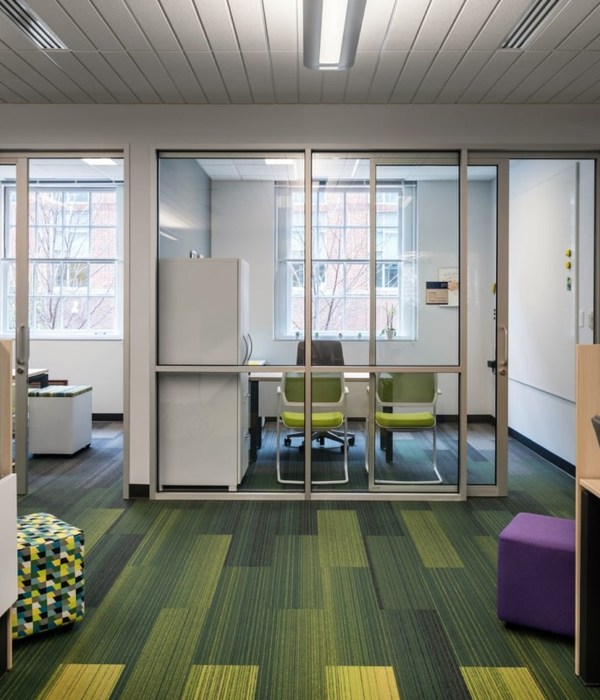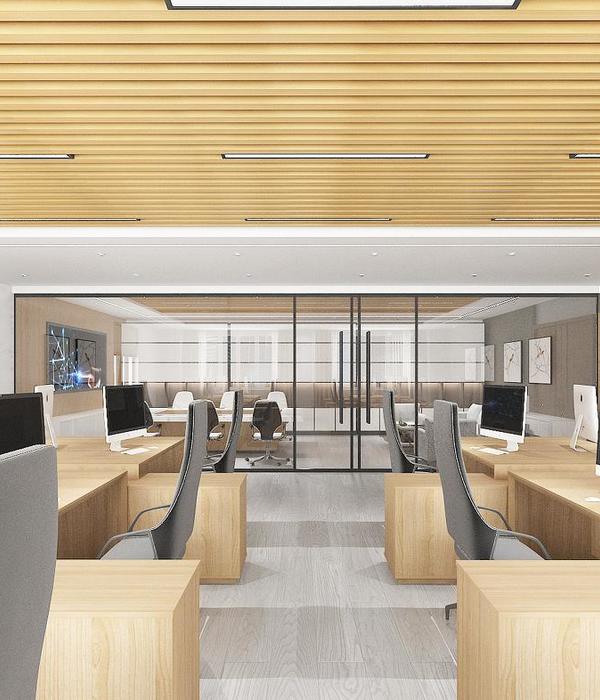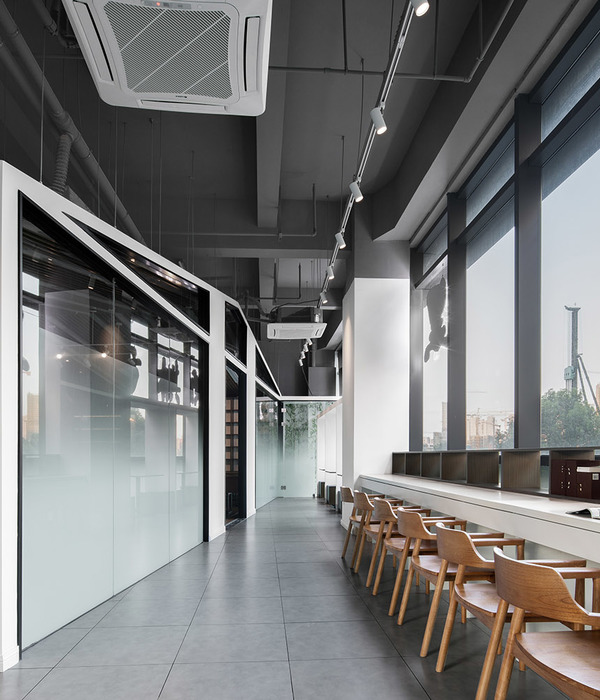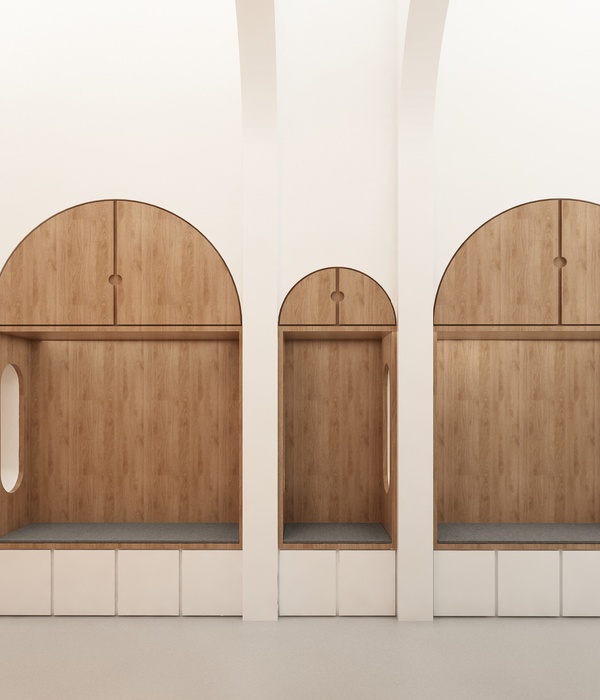得克萨斯州 Shield 牧场整体规划 | 高科技守护下的生态景观
来自
ASLA
Shield Ranch Master Plan by
Andropogon Associates, Ltd.
项目陈述
PROJECT STATEMENT
得克萨斯州95%的土地归私人所有,这为土地所有者在增强景观的生态服务功能、置入弹性空间以及激发得州居民对自然和文化环境的兴趣方面赋予了绝无仅有的地位。 Shield牧场的整体规划项目例证了一个家庭在长达80年的历程中如何对土地的管理和维护构成关键性的影响。为了保护奥斯汀Shield牧场6800英亩的景观并使其与下一代家庭及社区形成联系,整体规划团队以开创性的方法对标志性景观的复杂、天然而又具有文化意义的系统进行了建模和分类。借助最先进的数字工具、高度清晰且对公众开放共享的数据,以及与专业人士共同在现场收集的资料,规划团队与农场主家庭对区域景观进行了深入“阅读”,并开发出了一个高度协调的新功能网络。该总体规划方案能够广泛地适用于美国西南部和得克萨斯州的其他土地所有者,帮助他们在对气候高度敏感的干旱景观中实施可持续的土地开发,保护并增强土地的弹性。
Ninety-five percent of Texas is privately owned, thereby providing land owners the unique capacity to enhance the landscape’s ecosystem services, embed resiliency, and reinvigorate Texans about their distinctive natural and cultural environment. The Shield Ranch Master Plan demonstrates one family’s evolving approach to land stewardship and advocacy during a pivotal point in their 80-year journey. To protect, connect, and share Shield Ranch’s 6,800-acre, Austin, TX landscape with the next generation of family and community, the master planning team pioneered an innovative process for modelling and categorizing the iconic landscape’s complex, natural and cultural systems. Using state-of-the-art digital tools; high–resolution, publically-available data; and on-site data collection with experts, the team and family collaboratively “read” the landscape and developed a highly-attuned network of new program areas. This master planning process is widely applicable to other land owners in the American Southwest and Texas who wish to advocate for sustainable land development, conservation, and enhanced resiliency within arid landscapes that are particularly vulnerable to climate change.
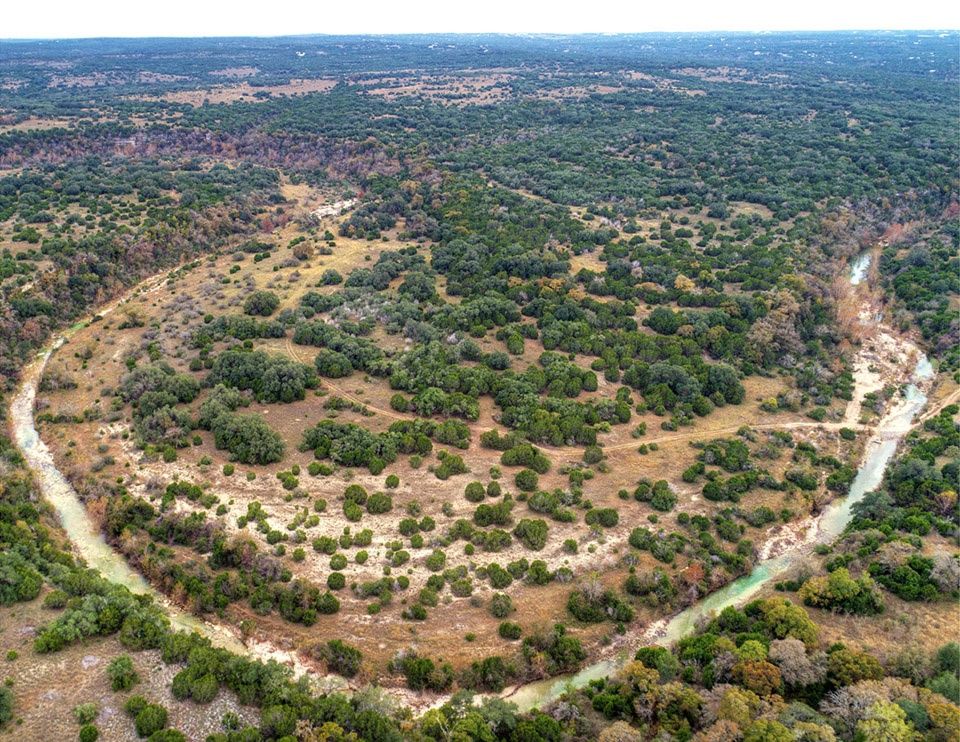
▲Shield牧场整体规划。为了保护奥斯汀Shield牧场6800英亩的景观并使其与下一代家庭及社区形成联系,整体规划团队以开创性的方法对标志性景观的复杂、天然而又具有文化意义的系统进行了建模和分类。Shield Ranch Master Plan. To protect, connect, and share Shield Ranch’s 6,800-acre landscape with the next generation of family and community, the planning team pioneered an innovative process for modeling and categorizing the iconic landscape’s complex natural and cultural systems using state-of-the-art digital tools.
项目说明
PROJECT NARRATIVE
“创造性的倾听:倾听土地,倾听过去,倾听我们最深切的渴望,倾听彼此,倾听那些最想要和可能成为的东西。”—— Shield基金会执行合伙人兼联合所有人Robert A. Ayers在规划过程中如是说。
为未来而保护
Shield-Ayres-Bowen家族对得克萨斯州中南部地区的土地实施管理已有80年的时间。1988年,家族加强了对土地的长期保护和发展承诺,为其所有的Shield牧场的6800英亩土地申请了保护地役权,并重点关注了土地的水质、水量以及敏感栖息地保护。如今,家族凭借2018年制定的以技术驱动的创新性规划方案,再次强调了他们致力于保护和发展Shield牧场的愿景。这一周期长达十年的整体规划以开创性的方法对标志性景观的复杂、天然而又具有文化意义的系统进行了建模和分类,最终提炼和总结出了长期开发和管理过程中的优先事项。
如何体现重要性?
Shield牧场地处美国西南部(98度经线),在气候变化和人口增长带来的极端影响下,这里被认为是一个“危险地带”。大规模的风暴会为该区域带来长时间的干旱,并会随着气候变化不断加剧。从地理位置上看,牧场位于Edwards高原(30c生态区)的Balcones峡谷和巴顿河流域。该流域的河水流向Edwards的蓄水层补给带,为超过200万人口提供了生活用水,同时也会受到Shield牧场的水文状况以及附近大规模土地使用活动的影响。基于弹性的规划,该方案利用物理性的干预和长期的管理措施来缓解这些压力,并试图解决得克萨斯丘陵地带的居民所面临的一系列困扰,包括栖息地的丧失、公共基础设施和道路的修建、水资源的短缺、水质不佳、火灾风险、光污染和噪音污染,以及可视域的退化等等。
以80年家族土地伦理为导向的整体规划
Shield-Ayres-Bowen家族长期致力于土地的管理、保护以及宣传教育,到目前已历经四代人的努力。从2016年到2018年,全局性的规划方案使该家族掌握了更加现代化的管理方法,并为牧场未来的发展轨迹制定出了纲领性的计划。基于“预先规划”的思路,家族致力于开发不同类型的“功能区域”,以期与公众分享Shield牧场的自然和文化景观之美。这些区域包括游客中心、自然保护区和步道系统、休闲中心、研究中心,以及为Shield牧场既有的儿童和青少年沉浸式自然体验营准备的永久设施。为了实现这一远景,Shield牧场的整体规划被分为以下几个具体的目标:1)在家庭范围内就功能区域的发展决策达成共识;2)基于对敏感场地的保护以及对文化需求的考量来确定这些区域的具体位置;3)在尽可能降低对土地影响的前提下,对家庭成员授予以可再生方法建设和运营牧场的权利。
整体规划过程
与所有可持续的规划和设计方案一样,实现这些目标的前提是对景观的自然和文化系统持有充分的理解和尊重。Shield牧场总体规划首先经历了6个月的“探索阶段”,对场地进行了深入的调研、数据收集、倾听和学习。在这一过程中,规划团队分析了牧场的区域环境和潜在的外部威胁;厘清了自然资源现状(涉及地质、水文、野生动物和栖息地、未开发区域、土地管理和水源适用性等方面);评估了文化资源(包括史前遗迹、历史和文化景观、既有基础设施以及场地和景观评估等);为每个功能区域设立了有家庭成员和工作人员组成的工作小组(主要就目标、功能、受众、可持续的运营和管理战略方面达成共识);并且与家庭成员共同为未来土地所有权的划分制定了基本框架。
在之后的“总体规划阶段”期间,团队将之前列出的目录清单和数据分析结果应用到实际的场地规划当中,以确定功能区域的具体位置,并制定可持续的管理方针。
用技术推进规划
近期的研究表明,对当地生态水文地质的错误干预已经对整个区域脆弱的景观环境造成了破坏性的影响。作为全美国发展最快的地区之一,这种具有误导性的做法使当地的自然和文化资源均面临风险。为了在保护这些资源的同时在Shield牧场建立一系列功能性的空间,同时强调出沉浸式的自然环境以及该区域的历史内涵,规划团队需要对广阔的景观进行足够细致的分析。一般而言,传统的规划方法并不足以满足类似的需求,更何况是对于一个如此庞大且变化多端的景观体系而言。所以,到底应该如何处理这些细节问题?如何定义并找到景观的特征区域?以及如何通过营造这些场景来对场地中珍贵的音景和可视域形成良性的影响?
为了满足这些需要,整体规划团队开创了一套高科技的工作流程,能够对当地景观复杂、天然而又具有文化意义的系统进行建模和分类,并识别和定义出敏感区域。这套广泛适用于美国西南部和得克萨斯州各类土地所有者的工作流程具体分为以下几步:
基于激光雷达数据的水文地质建模:利用得克萨斯州政府提供的高清点云数据图和科学家贡献的数据,对该区域的水文地质系统和水流运动进行模拟,随后为每个水文区域制定具体的水体管理策略。
基于激光雷达数据的视域和声景建模:利用高清点云数据图和植被数据,分析既有的听觉和视觉条件,找到需要被保护的、在未来将成为沉浸式自然体验场地的潜在区域。
开发用户可参与的GIS工具和智能手机程序:规划团队对每个工作小组都进行了培训,为的是能够对80年来积累下来的数据和知识进行数字化的记录;对访问科学家的发现进行数字化的记录;证实分析的结果;反复测试拟定功能区域设计的合理性;明确牧场的完整性在未来可能受到的威胁。
生态水文地质规划框架:基于GIS数据以及与当地科学家和政策制定者的交流得出的信息,制定出Shield牧场的具体设计方针:1)多变的地质特征(包括对阶梯地层的保护,置入高性能的“引流管道”);2)改善水质;3)为场地中两个濒危的物种(金颊黑背林莺和黑顶莺雀)提供高质量的栖息地。
让未来可期
为了对总体规划的执行进行优化,团队与业主及众多专家就以下方面进行了合作:
通过对拟定构建元素的实地验证来优化每个功能区域。
通过水源捕获和再利用以及创新型废水处理措施来获取洁净的水源和能源。
为休闲中心的功能区域制定经济可持续的运营和管理计划。
根据潜在的资金来源来制定分段式的实施方法。
Shield牧场整体规划充分迎合了Shield-Ayres-Bowen家族的愿景,同时也为开发功能区域、维护家族利益以及实现长期的管理目标奠定了可持续的基准。该规划方案展示了土地管理、维护和发展的多代演变,并有可能对整个得克萨斯州以及美国西南部私有土地的未来发展起到重要的影响。
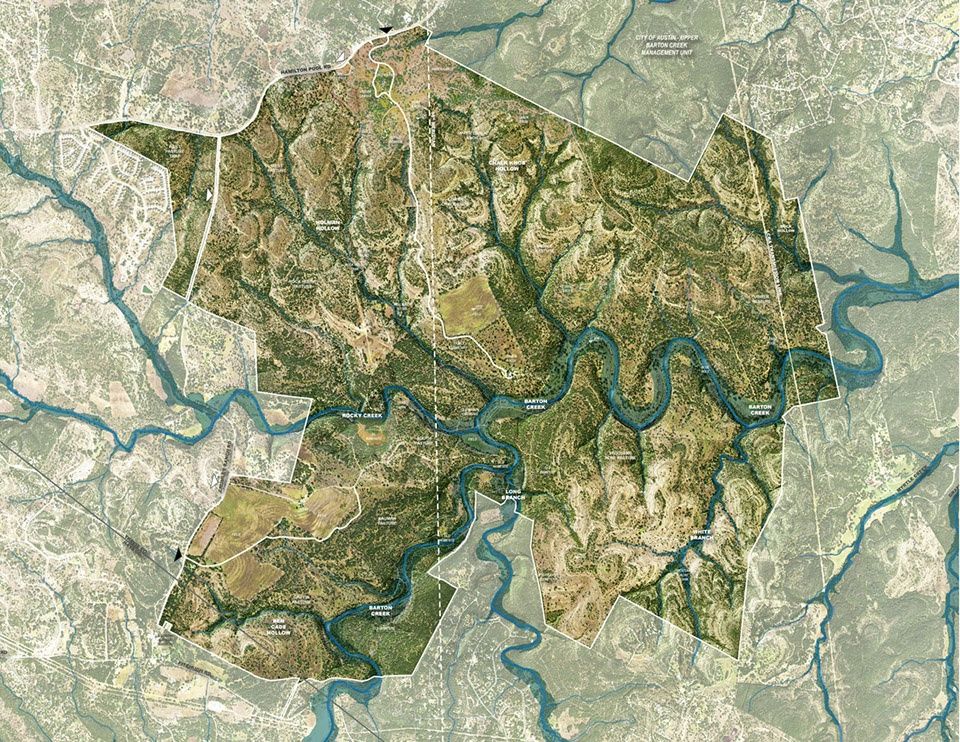
▲优先保护。Shield牧场是得克萨斯州奥斯汀郊区的一处私人土地。自1998年以来,牧场超过90%的面积一直处于保护地役权之下,自然和文化资源都得到了保护,包括2种濒危动物和各类历史建筑。Prioritizing Conservation. Shield Ranch is a privately-owned wilderness on the outskirts of Austin, Texas. More than 90% of the property has been under conservation easement since 1998 to protect the landscape’s natural and cultural resources, including 2 endangered species and historic structures.
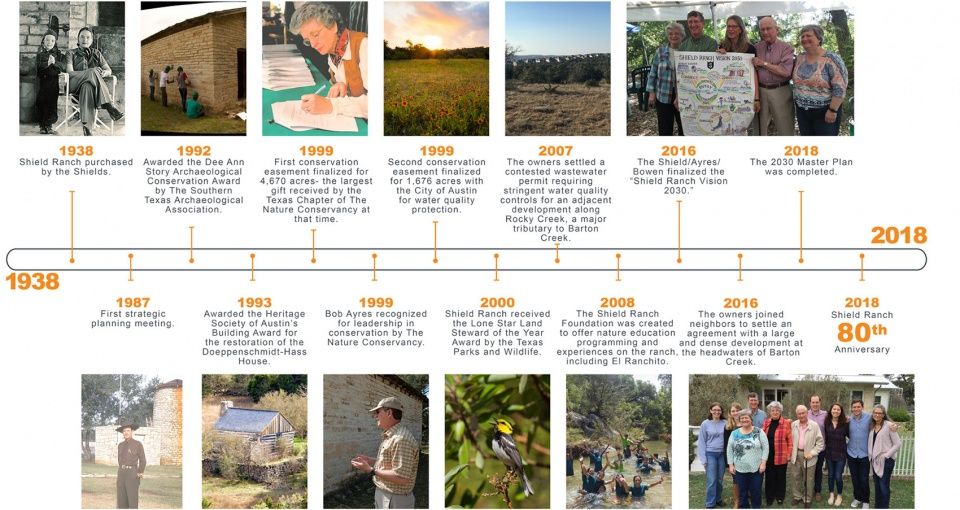
▲80年的管理经验:土地所有者的模范。牧场的所有者长期致力于土地的管理、保护以及宣传教育,到目前已历经四代人的努力。全局性的规划方案使该家族掌握了更加现代化的管理方法,并为牧场未来的发展轨迹制定出了纲领性的计划。80 Years of Stewardship: A Model for Land Owners. The owner’s longstanding commitment to stewardship, advocacy, and education spans four generations. An inclusive master planning process enabled the family to collectively modernize their stewardship approach, to guide the ranch’s vision, including physical and programmatic trajectories for future generations.
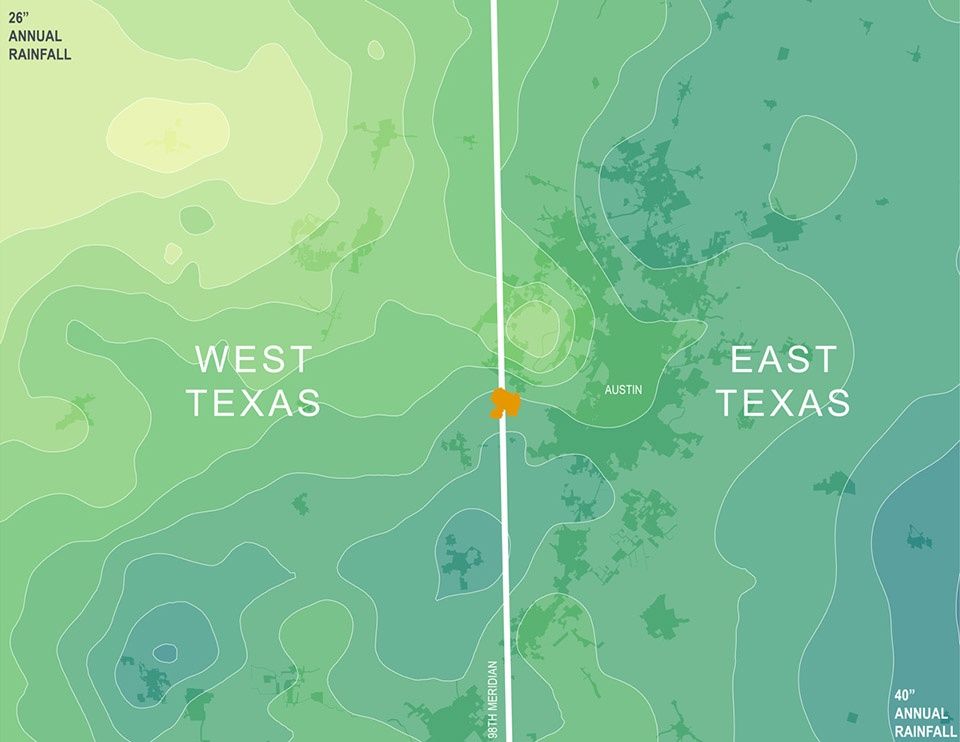
▲场地现状:气候变化。Shield牧场Shield牧场地处美国西南部(98度经线),在气候变化和人口增长带来的极端影响下,这里被认为是一个“危险地带”。大规模的风暴会为该区域带来长时间的干旱。Regional Context: Climate Change. Shield Ranch lies at the American Southwest gateway (98th meridian), which is considered a “danger zone” due to the extreme impacts of climate change paired with rapid population growth. Large storm events typically intersperse extended periods or drought.
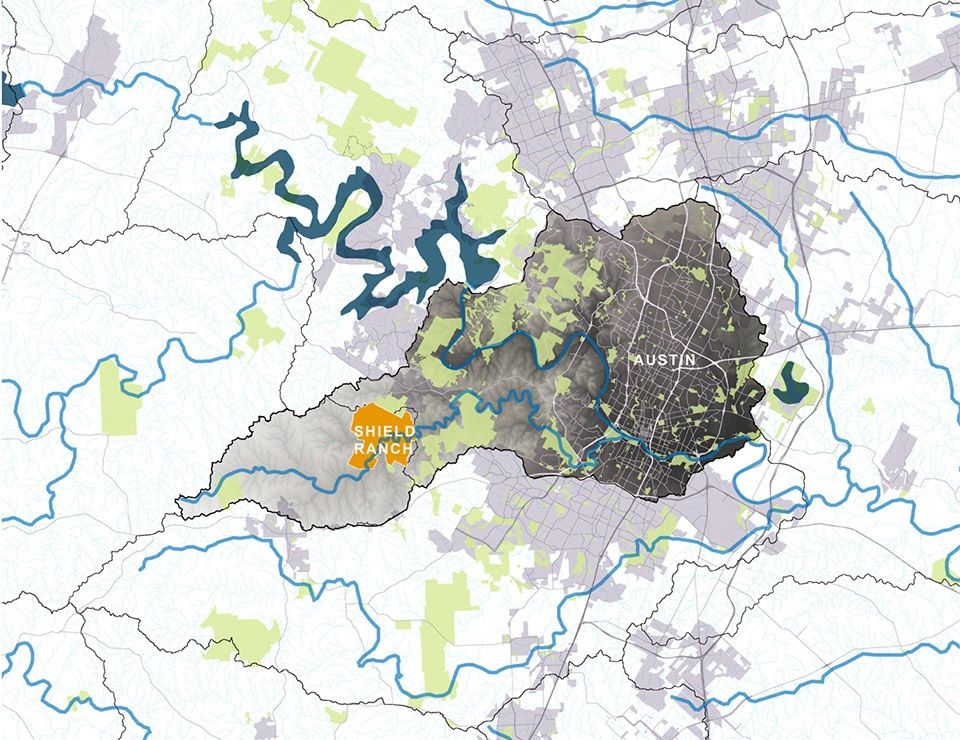
▲场地现状:水文关系。牧场位于Edwards高原(30c生态区)的Balcones峡谷和巴顿河流域。该流域的河水流向Edwards的蓄水层补给带,为超过200万人口提供了生活用水。Regional Context: Hydrologic Connection.The ranch lies within the Balcones Canyonlands of the Edwards Plateau (ecoregion 30c), and the Barton Creek watershed. This watershed drains to the Edwards Aquifer recharge zone–the primary water supply for more than 2-million people.
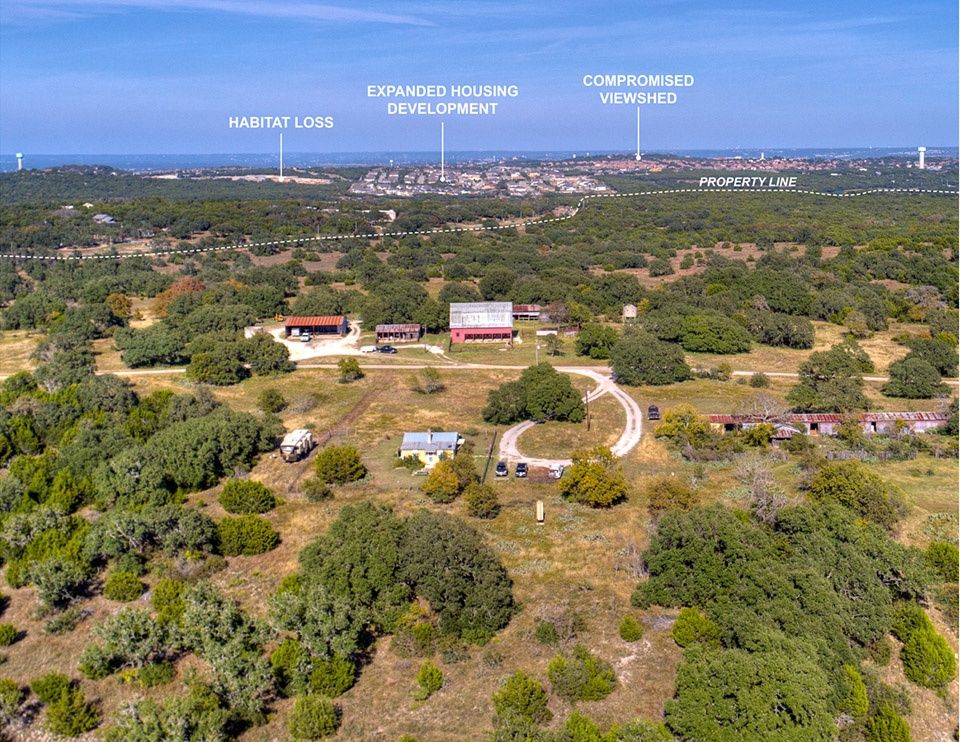
▲地区威胁:牧场的完整性及其带来的生态系统效益面临着一系列潜在威胁,包括新住宅区的开发;栖息地的丧失;公共基础设施和道路建设;水资源的短缺;水质不佳;火灾风险;光污染和噪音污染;以及可视域的退化等等。Regional Threats. Regional threats to the ranch’s integrity, and the ecosystems services it provides, include new housing developments; habitat loss; imminent domain for public infrastructure; groundwater decline; water availability and quality; climate change; fire; light and noise pollution; and compromised viewshed.
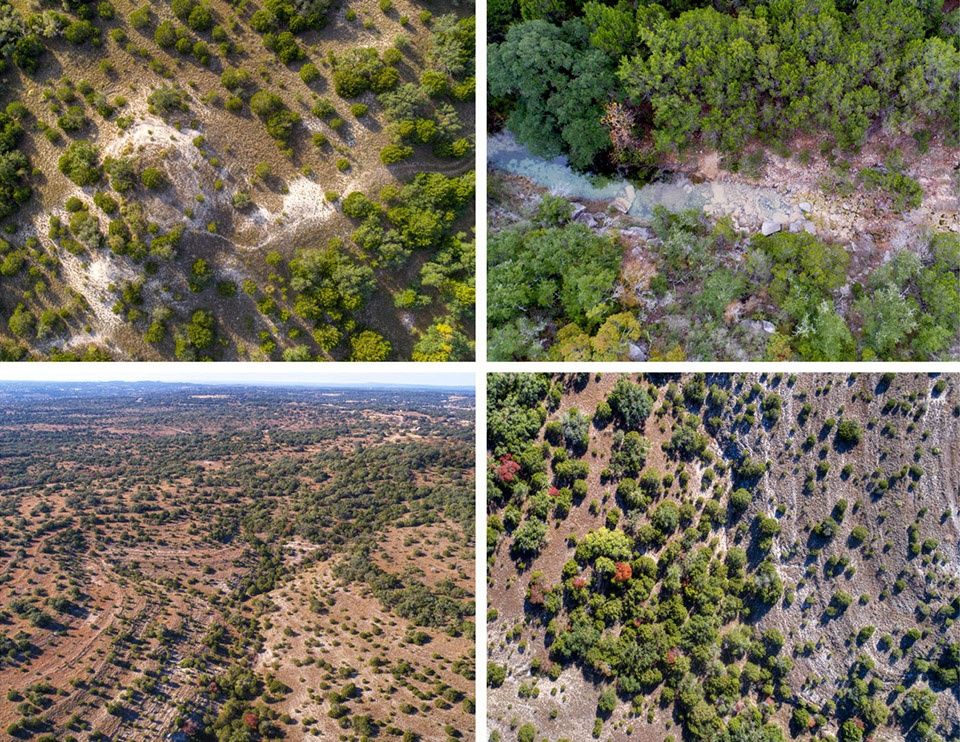
▲肌理和演变:植被、水体以及复杂的地质是景观最重要的特征。这三者之间的关系对于整个地区地下水资源的健康状况起到关键性的作用,同时也是总体规划中最重要的考虑因素。Pattern and Process. The landscape’s most defining characteristics are the interface of vegetation, water, and the complex, underlying geology. This relationship is critical to the health of the groundwater resources for the entire region, and the master plan’s most important consideration.
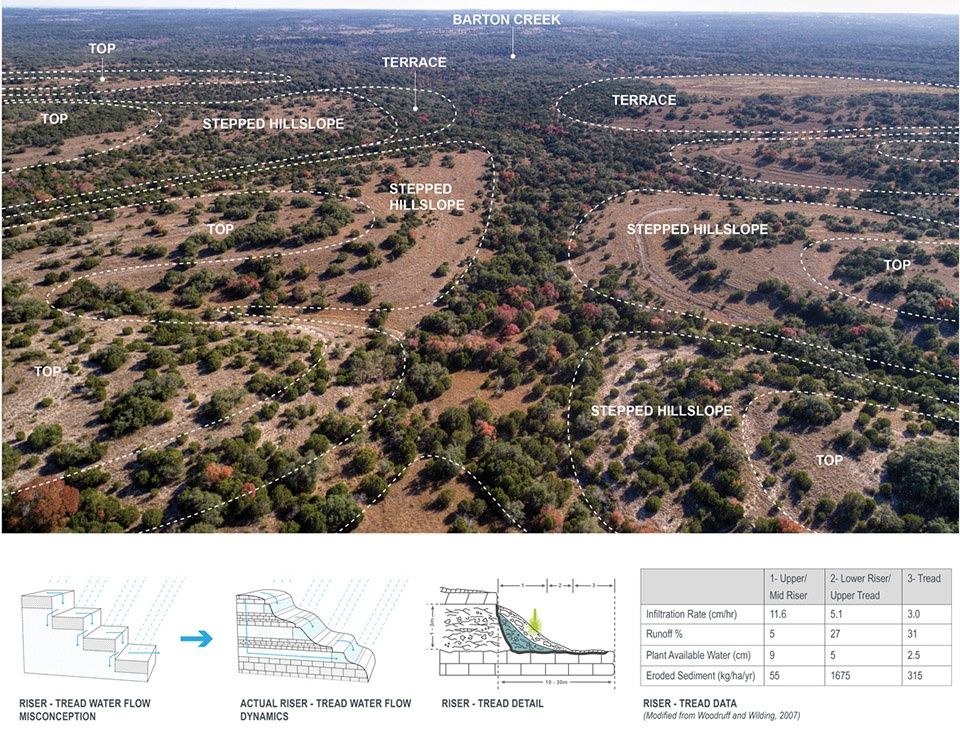
▲水文地质建模。对当地生态水文地质的错误干预已经对整个区域脆弱的景观环境造成了破坏性的影响。规划方案的目的是根据既有研究来建立水文地质模型,在阶梯状的山坡上置入“引流管道”,这对于植物、水质和栖息地而言至关重要。Hydrogeologic Modeling. Prevalent misconceptions about regional hydrology have resulted in land mismanagement. The goal of the plan was to utilize current research to create a hydrogeologic model, which identifies “risers” of the stepped hillslope as critical for vegetation, water quality and habitat.
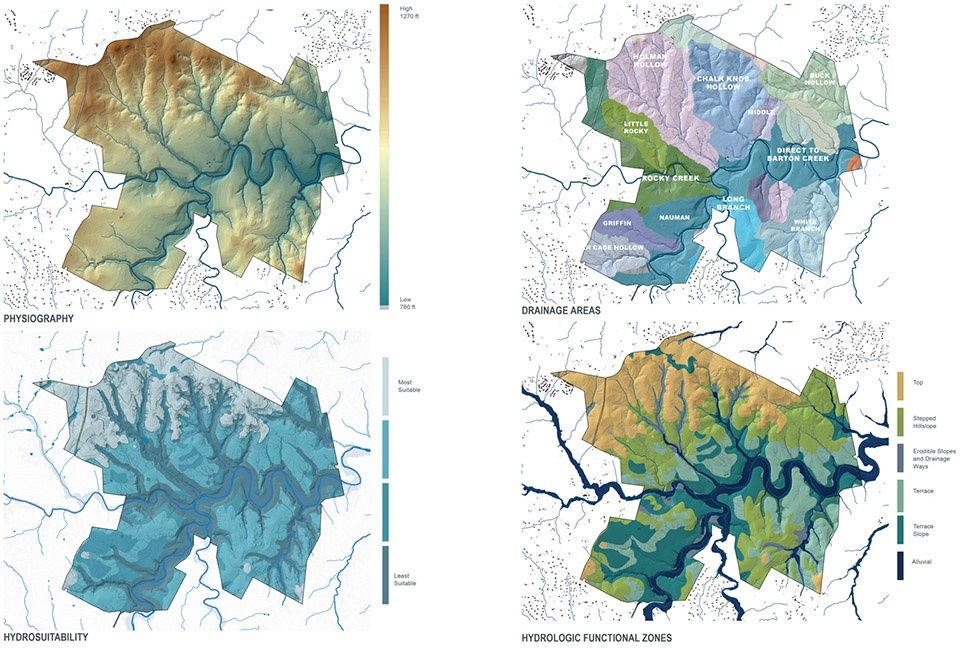
▲流域测绘:基于GIS绘制的水文地质分析图,展示了未来的河漫滩、陡坡、引流管道、地质构造之间的界限以及容易受到侵蚀的土壤,并根据水体运动的类型学划分出不同区域。Watershed Mapping. The ranch’s hydrogeologically-sensitive features—anticipated future floodplain, steep slopes, risers, boundaries between two geologic formations, and erodible soils—were mapped in GIS, then characterized into zones based on water movement typology.
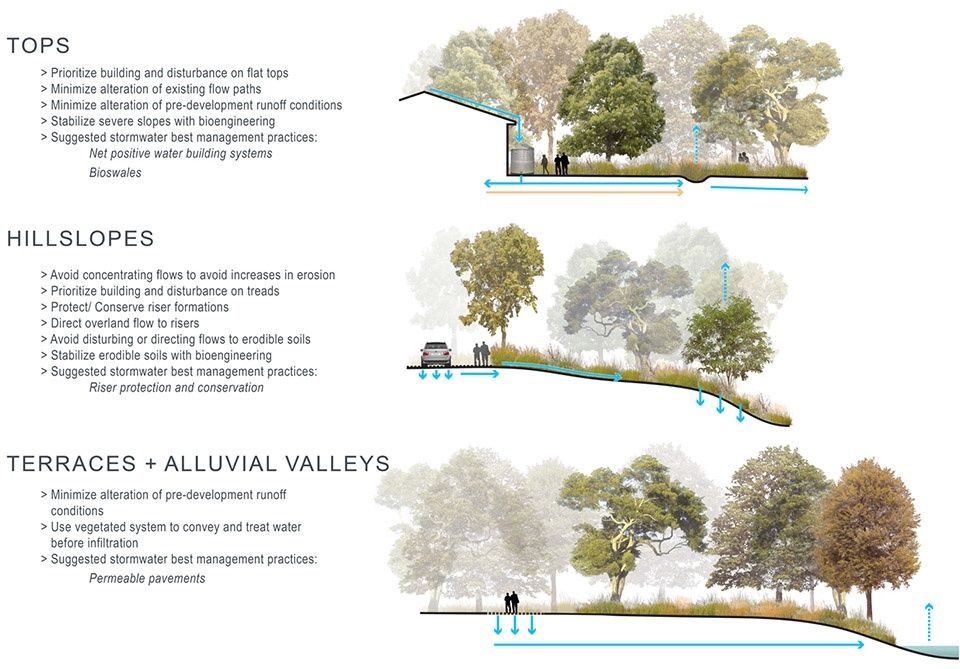
▲径流设计策略。为不同的水文地质区制定不同的管理、利用和开发方针,有助于确定出合适的新功能区域,同时为生态系统的保护提供有效策略。Watershed Design Guidelines. Water management, vegetation, land-use, and site development guidelines for each hydrologeologic zone helped to identify suitable locations for new program and devise design strategies for protecting the ecological systems.
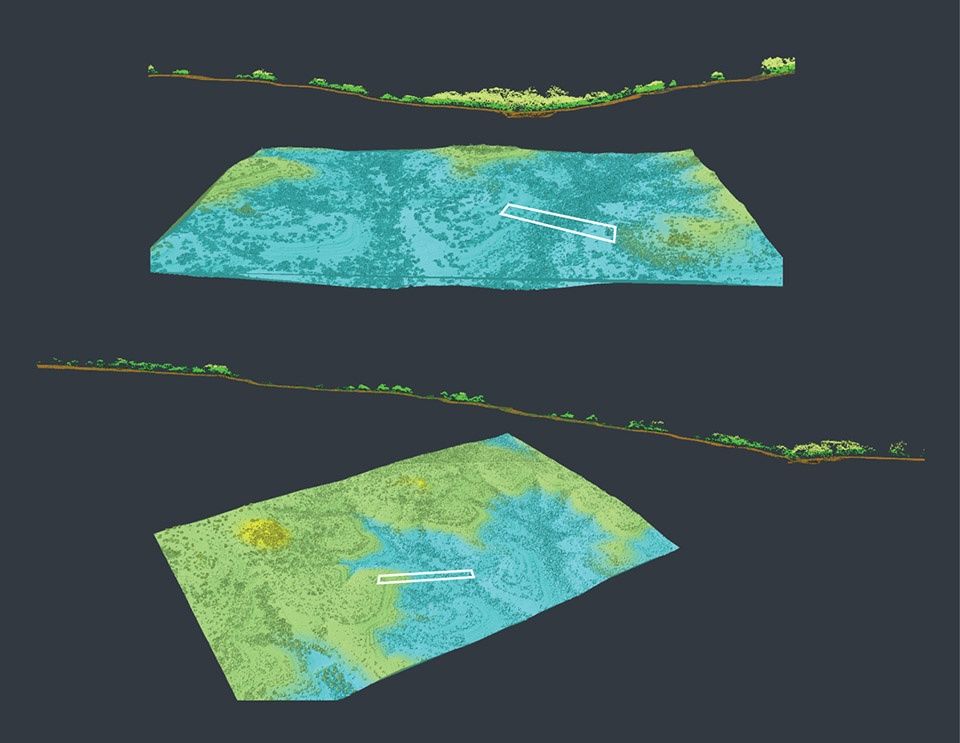
▲生态系统:借助从激光雷达获得的高清点云数据来模拟地形和植被。这些数据对于模拟复杂地质中的水体运动、识别景观特征区域和生态群落以及分析视域和声景而言有着十分宝贵的意义。Ecological Systems.High-resolution point-cloud data was derived from LIDAR to model topography and vegetation. This data served as an invaluable tool for modeling water movement in a complex geology, identifying landscape character zones and ecological communities, and performing viewshed and soundscape analyses.
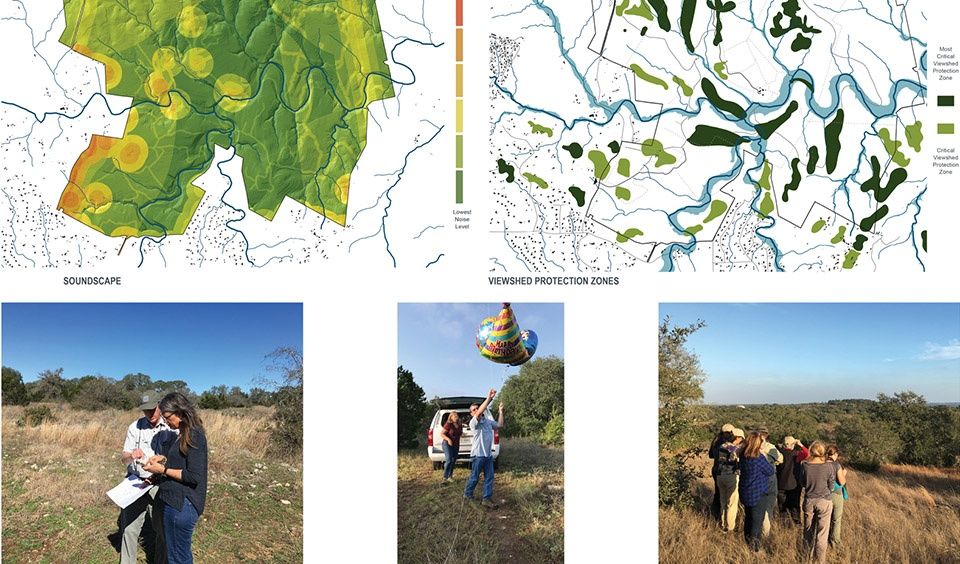
▲视域和声景保护:为了让游客能够充分沉浸于得克萨斯州丘陵地带的景观当中,规划团队对场地的视域和声景进行了分析。这一基于GIS的独特分析方法能够模拟出未来的景观情境,并通过智能手机和气球等工具进行了实地验证。Conserving Viewsheds & Soundscapes. To immerse visitors in the landscape of the Texas Hill Country, soundscapes and viewsheds were analyzed. This unique GIS analysis included modeling future landscape scenarios for neighboring properties and included field verification of the findings with smartphones and balloons.
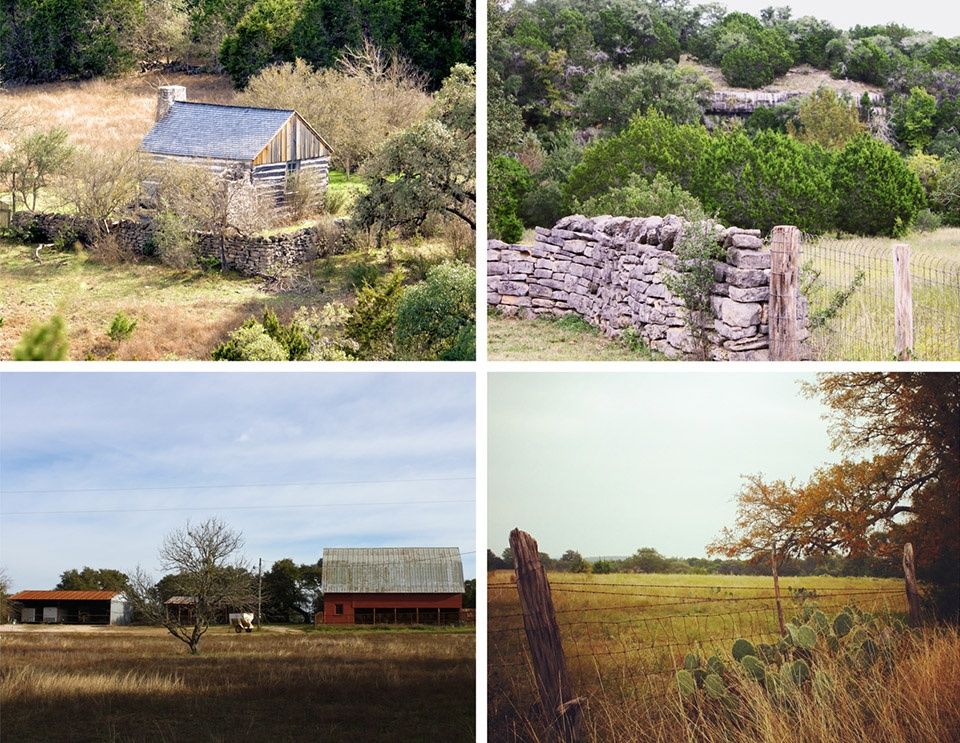
▲保护文化叙事:Shield牧场讲述着得克萨斯乡村地区的文化和自然历史。以GIS为基础的资源数据库对于确立优先保护区以及突显牧场的历史价值而言有着至关重要的作用。Preserving the Cultural Narrative. Shield Ranch offers a vanishing narrative of the Texas Hill Country’s cultural and natural history. A GIS-based database of these resources was critical in identifying priority areas for protection, enhancement, and for identifying places to tell the Ranch’s story.
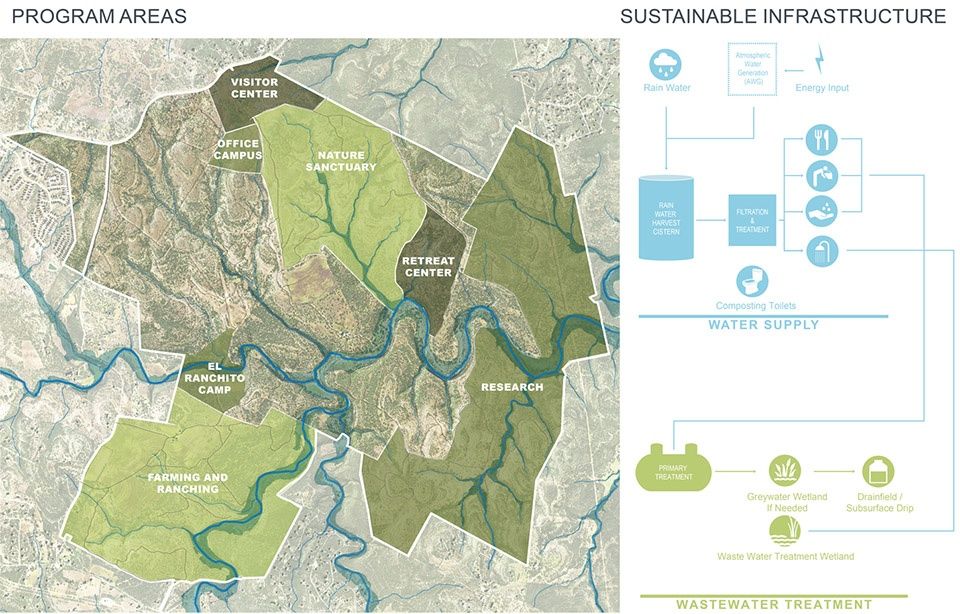
▲得克萨斯州丘陵乡村地区的可持续发展示范:针对每个功能区域,团队探索了多处场地,并根据每个区域的使用需求对场地条件进行了测试。方案的实施将证明可持续实践在实现净零能源和满足SITES评价标准方面的可复制性。A Model for Sustainable Development in Texas Hill Country. The team explored multiple locations for each program area and tested site conditions against each program area’s requirements. The implementation of the plan will be a demonstration of sustainable practices that are replicable- net-zero water and energy, and SITES requirements.
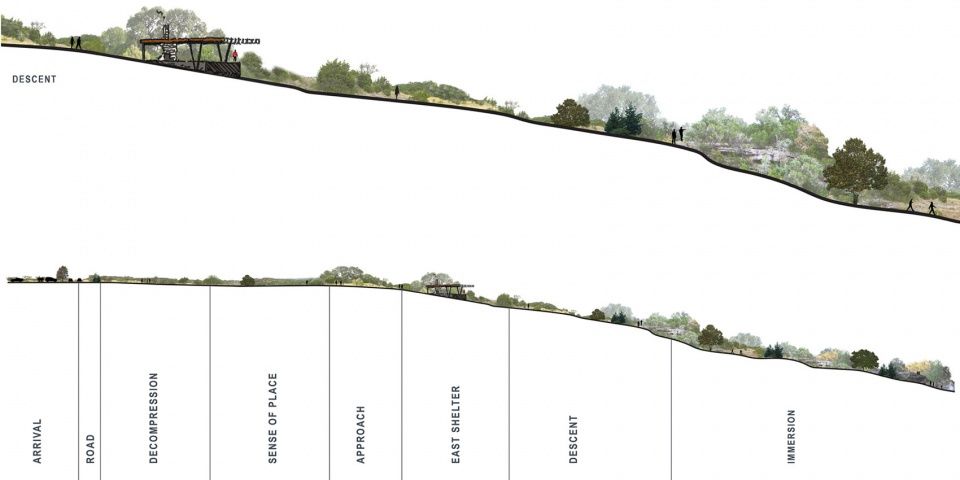
▲自然保护区带来了健康的生态环境和珍贵的自然景观。来访者可以在不断变化的季节中探索和发现不同的美景。团队还为此设计了新的徒步路径,使游客们可以在不同的生态系统中获得不同的体验。Nature Sanctuary. The Sanctuary preserves the ecological health and rare, natural beauty of a secluded area, and welcomes guests to an experience of solitude and discovery throughout changing seasons. The hiking trails are designed as journeys through the different ecosystems.
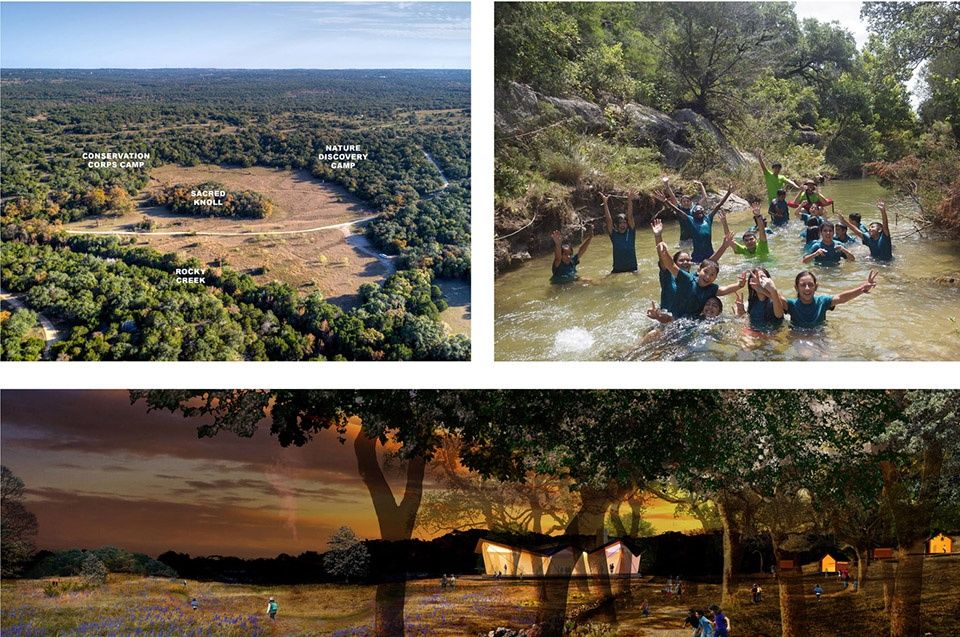
▲沉浸式的体验: El Ranchito是牧场中的功能区域之一,距离奥斯汀市中心20英里。它为儿童和青少年提供了独特的沉浸式自然体验营。露营场地中的建筑和设施巧妙地融入到周围的橡树林和松树林中。Immersive Experiences. One program area, El Ranchito, supports a unique, nature-immersion camp for children and youth who would not otherwise have an opportunity to attend camp. Campground structures and amenities artfully blend into the surrounding oak-juniper woodland, twenty miles from downtown Austin.
PROJECT NARRATIVE
“The power of generative listening: listening to the land, listening to the past, listening to our deepest longings and one another, and listening to what wants to and can be.” On the master planning process – Robert A. Ayers, Shield Foundation Managing Partner and Shield Ranch Co-Owner
Conservation for the Future
The Shield-Ayres-Bowen Family has maintained leadership in land stewardship within South-Central Texas for 80 years. The family heightened its long-term commitment to conservation and advocacy in 1998, when placing 95-percent of the family’s 6,800-acre Shield Ranch under conservation easement, with an eye toward protecting water quality, water quantity, and sensitive habitats. Now, the family has committed to adapting their vision of Shield Ranch to the needs of future generations through an innovative, technology-driven master planning process, completed in 2018. The 10-year master plan integrated a pioneering process for modeling and categorizing the iconic landscape’s complex, natural and cultural systems, with a consensus-building process for distilling long-term development and management priorities.
Why is This Important?
Shield Ranch lies at the American Southwest (98th meridian) gateway, which is considered a “danger zone” due to the extreme impacts of climate change paired with rapid population growth. Large storm events typically intersperse extended periods of drought within this zone, a phenomenon that’s exacerbated by climate change. Regionally, the ranch lies within the Balcones Canyonlands of the Edwards Plateau (ecoregion 30c), and the Barton Creek watershed. This watershed drains to the Edwards Aquifer recharge zone – the primary water supply for more than 2-million people – and is impacted by the hydrologic performance of Shield Ranch and neighboring, large-scale land holdings. Through resiliency planning, the Shield Ranch Master Plan leverages physical intervention and long-term stewardship to mitigate these threats, along with others that plague Texas Hill Country: habitat loss; imminent domain for public infrastructure and roads; limited water availability; degraded water quality; fire risk; light and noise pollution; and viewshed degradation.
Master Planning Guided by an 80-Year Family Land Ethic
The owner’s longstanding commitment to stewardship, advocacy, and education spans four generations. An inclusive master planning process, from 2016-2018, enabled the family to collectively modernize their stewardship approach, to guide the ranch’s physical and programmatic trajectory for future generations. Through a pre-master plan visioning process, the family committed to sharing the beauty of Shield Ranch’s natural and cultural landscape with the public by developing multiple “program areas.” These include a visitor center, nature sanctuary and trail system, retreat center, and research hub, as well as permanent facilities for Shield Ranch’s existing, nature-immersion camp for children and youth. To advance this vision, the Shield Ranch Master Plan’s primary objectives were to: 1) Establish consensus within the family regarding program area development decisions; 2) Site these areas based on protection of sensitive site features and cultural needs; and 3) Empower family members to execute the ranch’s buildout and operations in a regenerative manner, with minimal impact to the land.
Master Planning Process
Achieving these goals, as with any sustainable planning and design process, starts with understanding and respecting the landscape’s natural and cultural systems. The Shield Ranch Master Plan’s initial “Discovery Phase” supported this process through six months of gathering, listening, and learning. Through this process, the master planning team analyzed Shield Ranch’s regional context and external threats; inventoried natural resources (including geology, hydrology, wildlife and habitat, no development zones, land stewardship, and hydro-suitability); took stock of cultural resources (including pre-historic archeological sites, historic and cultural landscapes, existing infrastructure, and site and landscape evaluation); created a working group for each program area, composed of family and staff (to build consensus on goals, program, targeted user groups, and sustainable economic strategies for operations and management); and facilitated land partition planning with the family to lay the groundwork for future generation land ownership.
During the “Master Plan Phase” that followed, the team applied the inventory and analysis findings to the physical site in order to locate the program areas and develop sustainable management guidelines.
Advancing Planning with Technology
Recent research reveals that misconceptions about the region’s eco-hydrogeological processes (interactions between ecology, hydrology, and geology) are resulting in destructive land management practices throughout this vulnerable landscape. As one of the most rapidly growing areas in the U.S., these misinformed practices are placing natural and cultural resources at risk. To protect these resources and accommodate programmatic experiences within Shield Ranch that require nature immersion and interpretation of local history, fine-scale analysis over the expansive landscape was required. Conventional planning approaches proved inadequate for this effort, and furthermore often fall short within expansive, highly-variable landscapes. So, how are small details catalogued? What framework exists for identifying the landscape’s character zones? How will development scenarios impact precious soundscapes and viewsheds?
To address these needs, the master planning team pioneered a high-tech process for modelling and categorizing the landscape’s complex, natural and cultural systems, and identifying sensitive areas. This process, which is widely applicable to other land owners in the Texas and the American Southwest, included:
LIDAR data hydrogeological modeling – Using high-resolution, point cloud elevation data from the State of Texas and input from leading scientists, the master planning team modeled hydrogeological systems and regional water movement, then developed a water management strategy for each hydrological zone.
LIDAR data viewshed and soundscape modeling – Using high-resolution, point cloud elevation and vegetation data, the team analyzed existing auditory and visual conditions and potential future scenarios to site program that requires a preserved, nature-immersion experience.
Client-engaged GIS and smartphone app use – The team trained each working group to digitize and record 80 years’ worth of family knowledge about the ranch; digitize and record visiting scientists’ findings; ground-truth the analysis findings; test fit proposed program area design iterations; and identify future threats to the integrity of the ranch.
Eco-hydrogeological planning frameworks – By combining GIS data and information from interviews with local scientists and policy makers, the team tailored design guidelines that support Shield Ranch’s: 1) Variable geologic features (including protection of the stair-stepped geology’s, high-performing “risers”); 2) Need to improve water quality; and 3) Desire to provide high-quality habitat for two resident, endangered species (the golden-cheeked warbler and black-capped vireo).
Making the Future Real
To fine-tune an executable master plan, the team collaborated with the client and various experts to:
Refine each program area through field verification of proposed built elements.
Pursue net-positive water and energy using strategies including water capture and reuse, and innovative wastewater treatment.
Develop an economically-sustainable, operations and management plan for the retreat center program area.
Determine a phased implementation approach based on various potential funding sources.
The Shield Ranch Master Plan embraces the Shield-Ayres-Bowen family vision, while functioning as a benchmark for sustainable development that navigates programmatic needs, family interests, and long-term stewardship goals of a beloved place. This master plan validates a multi-generational evolution of land stewardship and advocacy, and provides a significant opportunity to influence the future development of privately-owned lands throughout Texas and the American Southwest.



